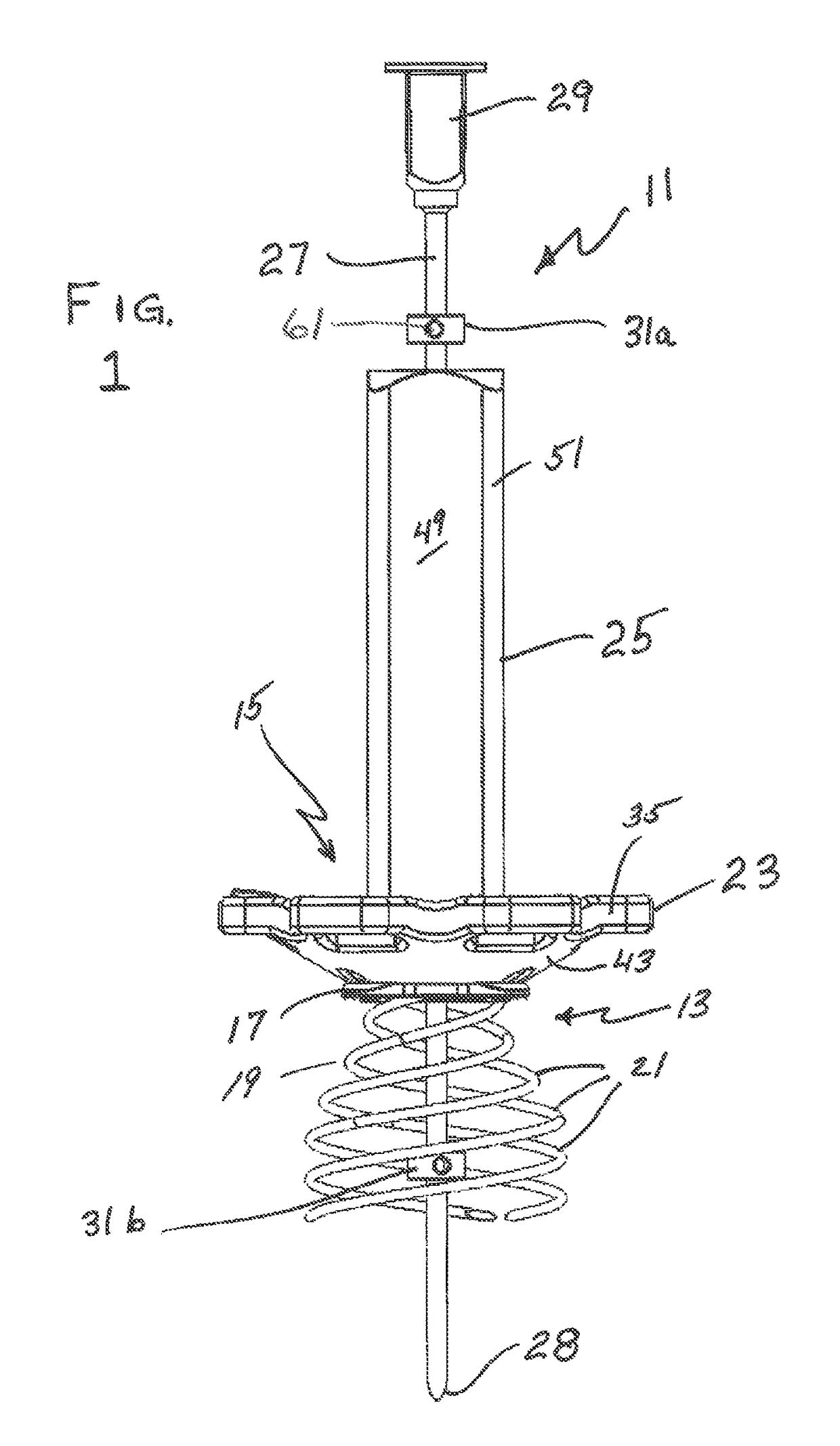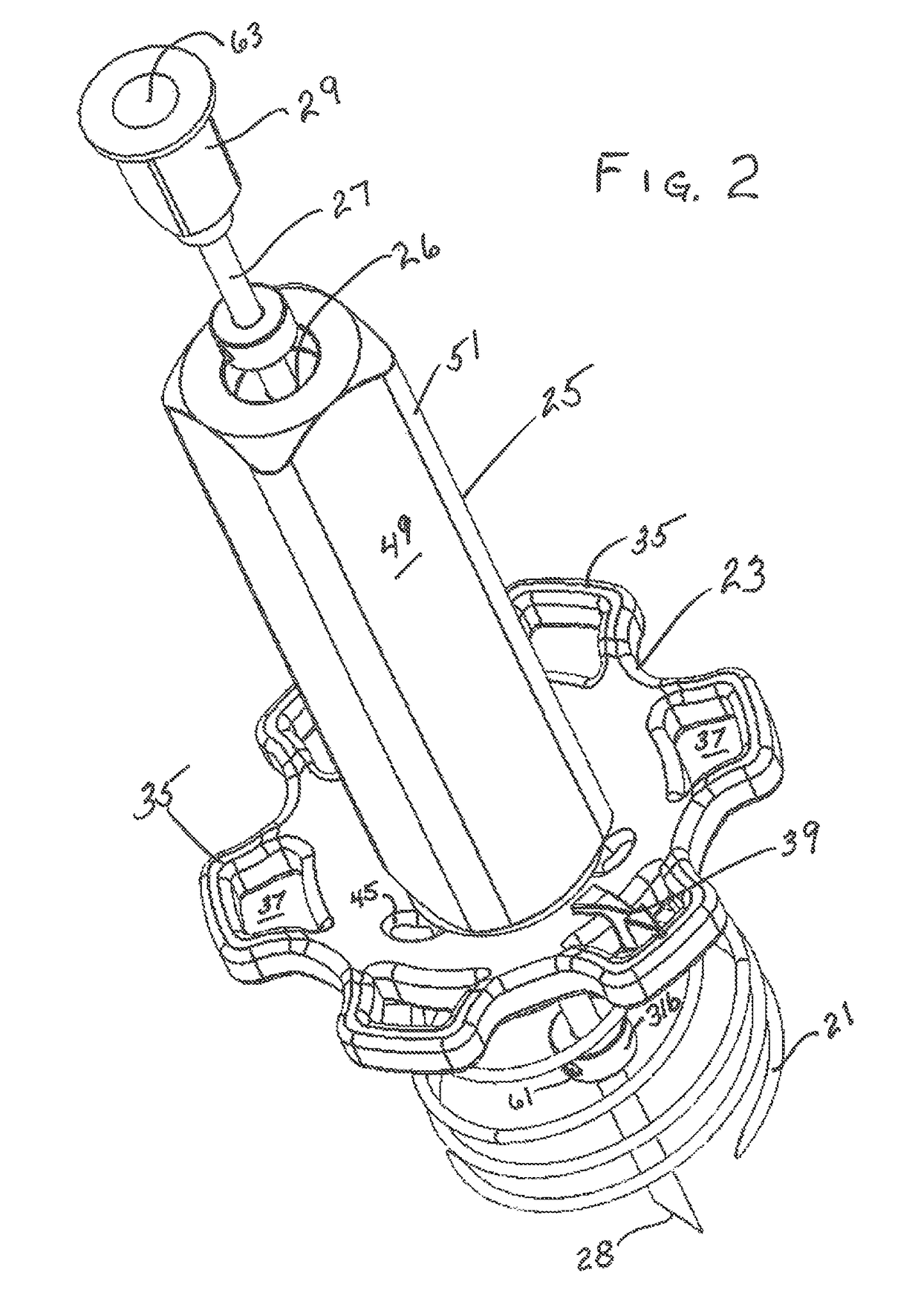Device for creating temporary access and then closure
a technology for creating temporary access and closing, applied in the field of devices for creating temporary access and then closing, can solve the problems of high risk for patients, and achieve the effect of simple operation, complex operation, and effective and convenient closing of such entry passageways
- Summary
- Abstract
- Description
- Claims
- Application Information
AI Technical Summary
Benefits of technology
Problems solved by technology
Method used
Image
Examples
Embodiment Construction
[0032]Two devices which constitute preferred versions of devices for the purpose of providing temporary access to an organ in the body of a living person are illustrated and described hereinafter; however, it should be understood that although the description is given, for purposes of convenience, with respect to entry into the left ventricle of the human heart via the apex, the devices could be used in connection with access to other bodily organs in situations where temporary access is desired and it is important to be able to promptly and effectively close the passage created into that organ upon completion of the medical procedure requiring such access.
[0033]Disclosed in FIGS. 1-15, is one embodiment of a device for providing temporary access to a bodily organ, such as the ventricle of the heart, and then readily and effectively closing such an access passageway when the operation in question has been completed. The device 11 includes an anchor 13 and a composite handle 15, whic...
PUM
 Login to View More
Login to View More Abstract
Description
Claims
Application Information
 Login to View More
Login to View More - R&D
- Intellectual Property
- Life Sciences
- Materials
- Tech Scout
- Unparalleled Data Quality
- Higher Quality Content
- 60% Fewer Hallucinations
Browse by: Latest US Patents, China's latest patents, Technical Efficacy Thesaurus, Application Domain, Technology Topic, Popular Technical Reports.
© 2025 PatSnap. All rights reserved.Legal|Privacy policy|Modern Slavery Act Transparency Statement|Sitemap|About US| Contact US: help@patsnap.com



